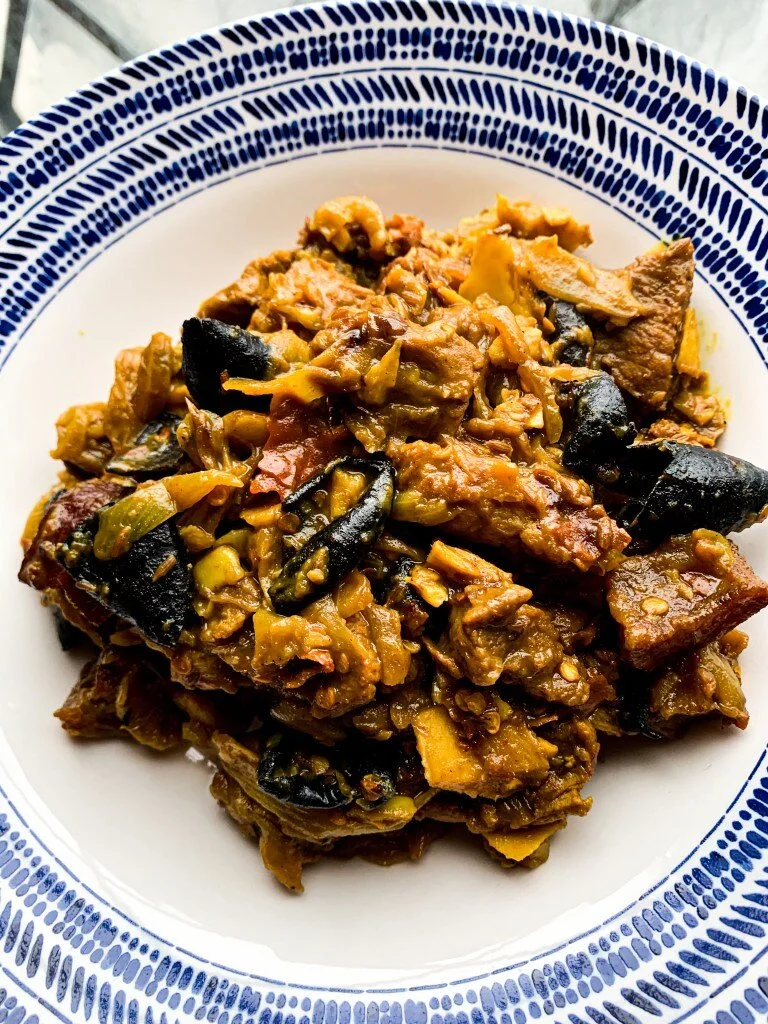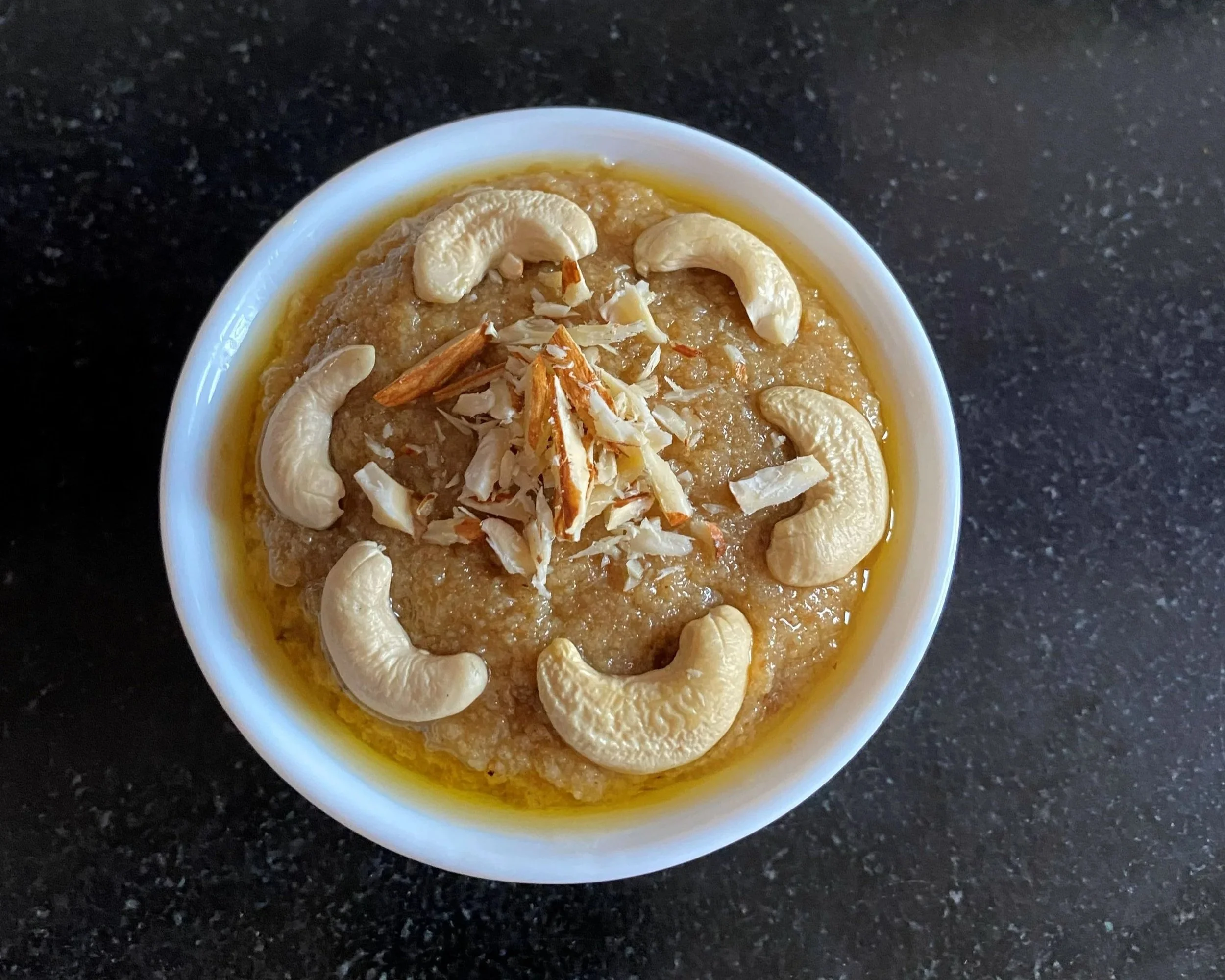Goan Solantulem Pork & a DIY Guide to Harvesting Kokum

During lockdown, Sheela Jayawant is forced to singlehandedly process the kokum from her tree, drawing on memory and borrowed experience, to supply the neighbourhood with their favourite souring agent.
This is the first year I’ve processed the kokum harvest alone, following what I’ve seen Vijay do for years. Vijay was the village woman, erstwhile farmhand, who used to help me with domestic chores and processing the produce from my compound. Widowhood, family problems and the the Covid lockdown kept her from visiting this year.
Kokum, as it is known in Maharashtra, acquired fame through restaurants that sell its juice (with or without coconut milk) as Sol Kadhi. Vijay, who has lived all her life in what was, until recently, forest-enclosed villages like Sangolda in Bardez, Goa, taught me how to process the bhinnda solam (‘m’ silent, a nasal sound), as the kokum in known in Goa, so it would last for years – not as a sherbet, but as a souring agent for Konkani cuisine, without losing potency. She told me, and I noticed then, that stuffing fresh fruit into jars with sugar and salt, and sunning them over many days, extracts the juice and makes it easy to use – but changes the flavour. (She also taught me the local method of growing/harvesting turmeric, and preserving jackfruit seeds. More on that later.) These traditional techniques of preservation are labour intensive, and therefore, rapidly dying out. This year, thanks to lockdown, I passed my DIY exam.
My conical, nearly 20-year-old Garcinia Indica looks like a Christmas tree from late April to early May. The ripened fruit, of the family Clusiaceae (mangosteen), hangs like crimson baubles on its branches. Near the trunk, in the middle where the boughs entwine; and at the tips, from the apex to the lowest level, the sun’s rays flow through the latticework of its delicate leaves and hundreds of fruits. They swell and ripen within a span of 10 days. In bygone centuries, children were encouraged to climb its branches with long sticks of bamboo and beat the fruit down. Now, there are no children in the neighbourhood; hired labour won’t do it for money, never mind love. So, at dawn and before sunset, the husband and I did sorties outside to pick through the fallen fruit, definitely overripe and tagged by the teeth of a squirrel or civet cat. Took us a week to collect most of them (the fruit, not the animals). Each previous evening collection was processed along with the morning batch; each day’s batch, therefore, at a different stage of production until the cycle was over, and all the kokum was packed and stored.
After a thorough wash, the hilum is removed; the pulp is scooped out into a large plastic tub, (a few stray, white worms are removed with a spoon), mixed with a little salt, squeezed hard, and strained into another tub. The strained liquid is called aagall. The seeds are dried separately on a newspaper, to be carried to the villages, to make oil with. I haven’t been able to source a wooden paraat to keep the aagall in. 60-year-old Vijay says she hasn’t seen wooden paraats of any sort, let alone of aagall-drying quality, since she was a child.
I leave the aagall out in the sun, in another set of tubs.
The rind is torn into quarters and dried for three days on a sheet under the scorching summer sun. (Plastic sheets, in the absence of tightly-woven grass mats, chatais). Each day, a fresh batch was treated the same way.
On the third night, the dried kokum is soaked overnight in aagall. The next morning, they are drained and dried again. This soaking, draining and drowning is repeated for three days. Now the kokum is ready to be sealed in air-tight containers, for at least a year, maybe longer.
Like fresh, unprocessed kokum, these dried bits can be soaked in water, two-three per glass, with salt, sugar, one green chilli, slit, and hing to taste. After an hour or two, strained, the infusion becomes a sherbet that looks like wine, and tastes divine. Omit the sugar, and substitute three-fourths of water with coconut milk, and that’s your sol-kadhi, with or without a seasoning of spluttering mustard-seeds and kadi-patta. Kokum can be added as a souring agent to dry vegetables, dals, usals and seafood curries, in place of tamarind, raw-mango, vinegar or lime. Traditionally, from Kerala to Gujarat, tomatoes (and onions) were never as ubiquitous in the culinary space as they are now.
I’ve tasted four different kinds of kokum. They taste similar, but the colours vary from dark violet to pink to orange. Vaids say the kokum has medicinal properties: ‘kills gas’, deals with allergies, summer-related ailments and does not ‘catch the throat’ like other souring agents. Experience tells me these observations are true. But there’s more. Kokum-butter,extracted from the seeds, has its own properties and is used in skin-care.
I invited Vijay later on, to take a look at my work. Had I processed the kokum yield correctly? She threw an expert eye over the glistening, dark-purple dehydrated bits inside the glass barni.
“You should have used more aagall,” she said, for one batch. For another, she remarked: “Use these up quickly. You did not dry them enough, they might spoil.”
Women like her are not easily found hereabouts, with practical knowledge about the foods that grew around them. Thanks to her, our neighbourhood gets an annual stock of kokum from one single tree. This year, proudly processed by yours truly.
Image credit: Delicious Cravings
RECIPE: SOLANTULEM MAAS, GOAN-STYLE PORK WITH KOKUM
Ingredients
500g pork (cubed, with some fat)
2 tbsp vegetable oil
Hing, 1 pinch
1 cup onions, roughly chopped
4 dry red chillies, whole
Turmeric, 1 pinch
1/2 pinch cinnamon powder
2 pieces kokum
Method
Clean the pork well, so no bristles are seen or felt.
Heat the oil and add in the hing first, followed by onions, and red-chillies, and saute till the onions are transparent.
Now add in the pork, salt, turmeric and cinnamon powder.
Saute, then cover and cook until the meat is cooked (about 40 minutes on a slow flame). Check the seasoning.
Add the kokums, sprinkle some water, and saute again. Now cover and cook for another 10 minutes.
The gravy should be watery, not thick; sour and spicy, to be slurped ‘hot-hot’ as we Goans say, with locally baked bread, poiee.
Banner image credit: Delicious Cravings
ALSO ON THE GOYA JOURNAL








